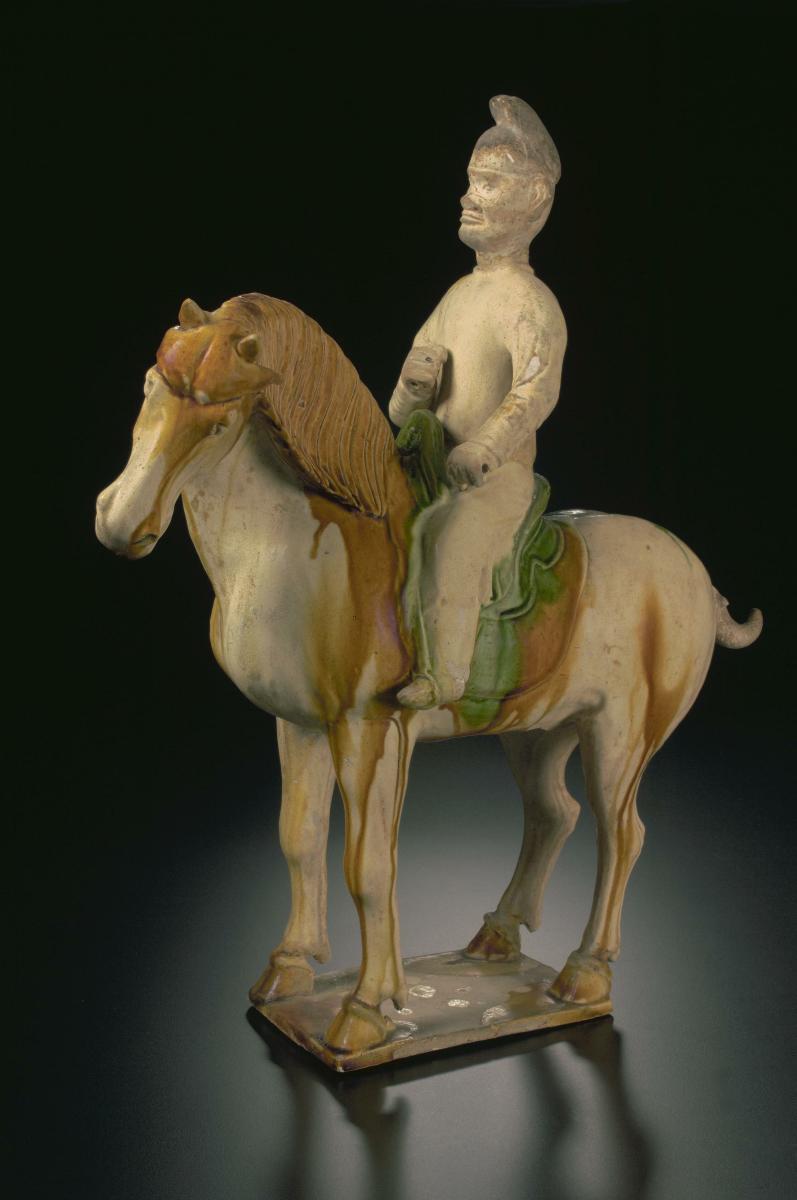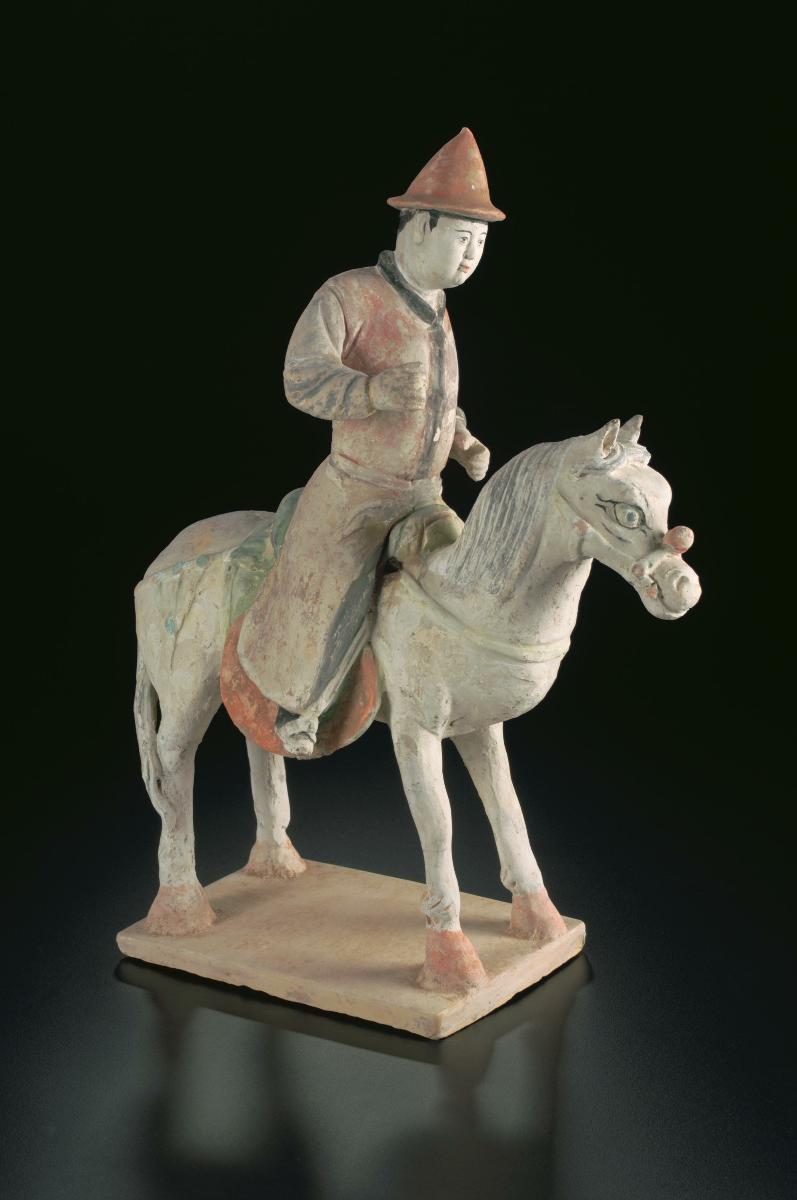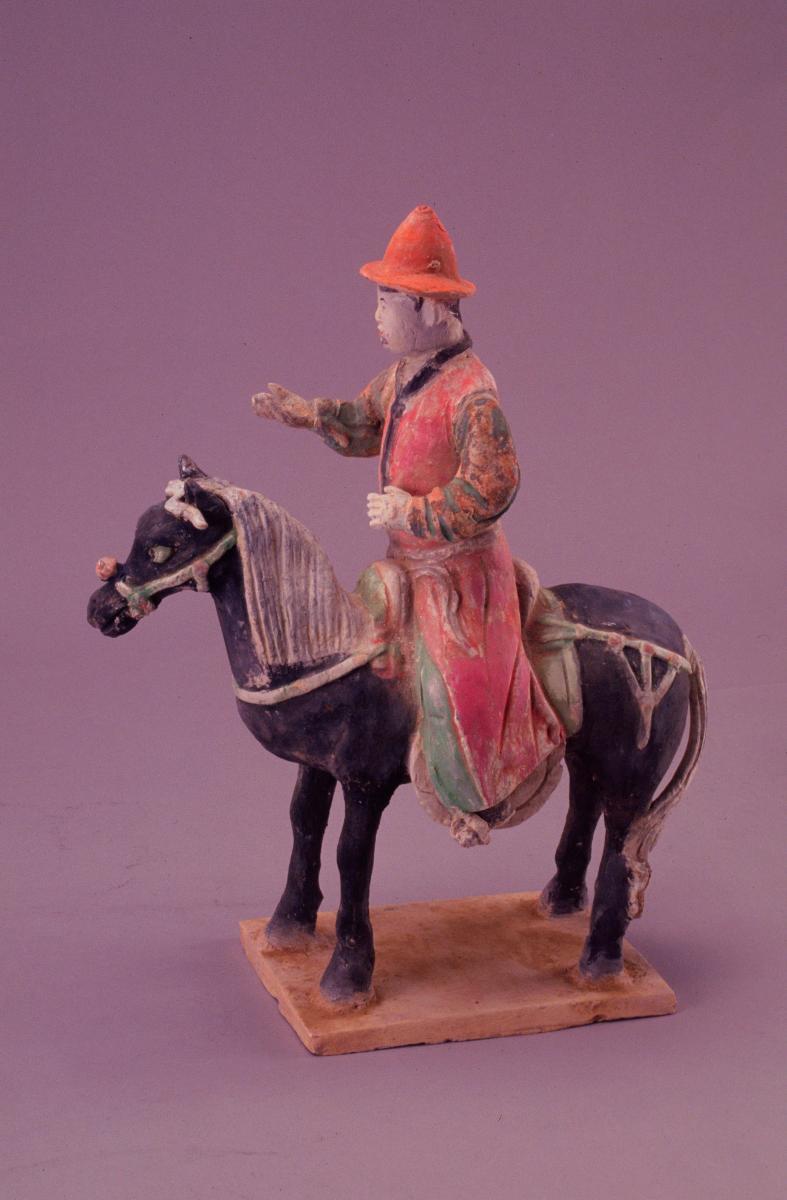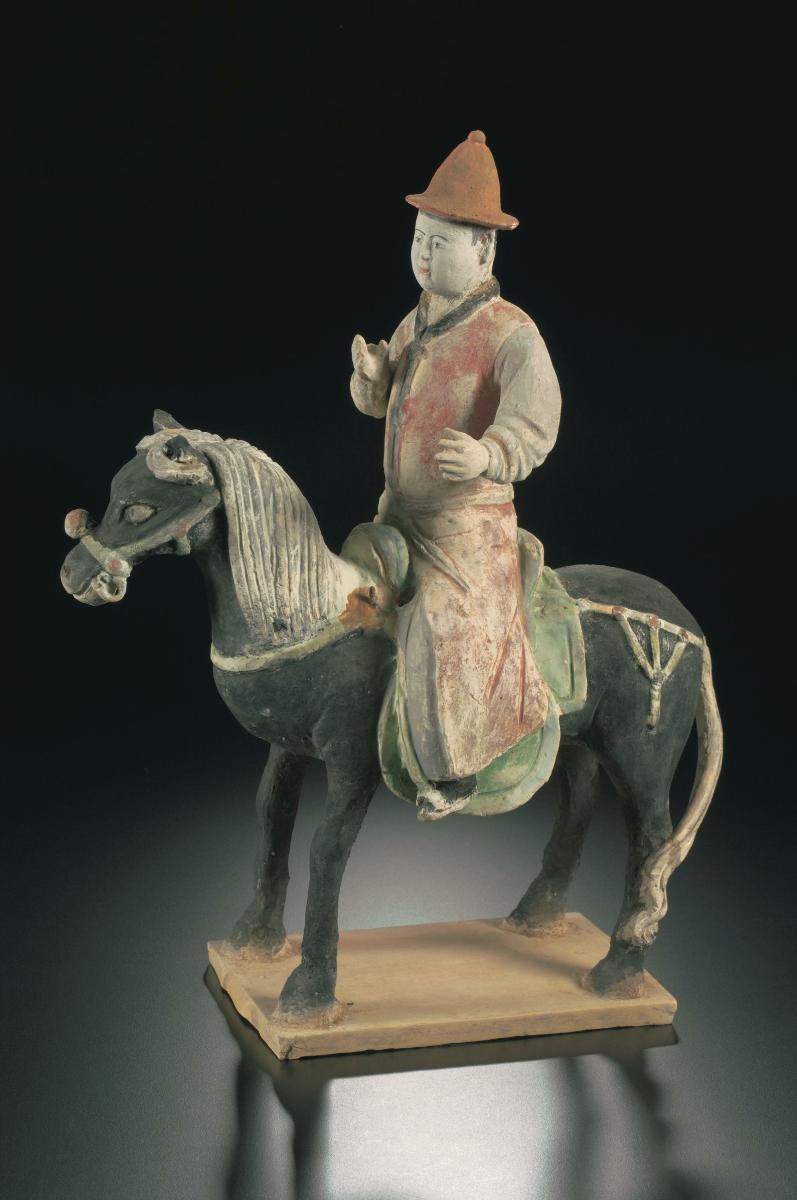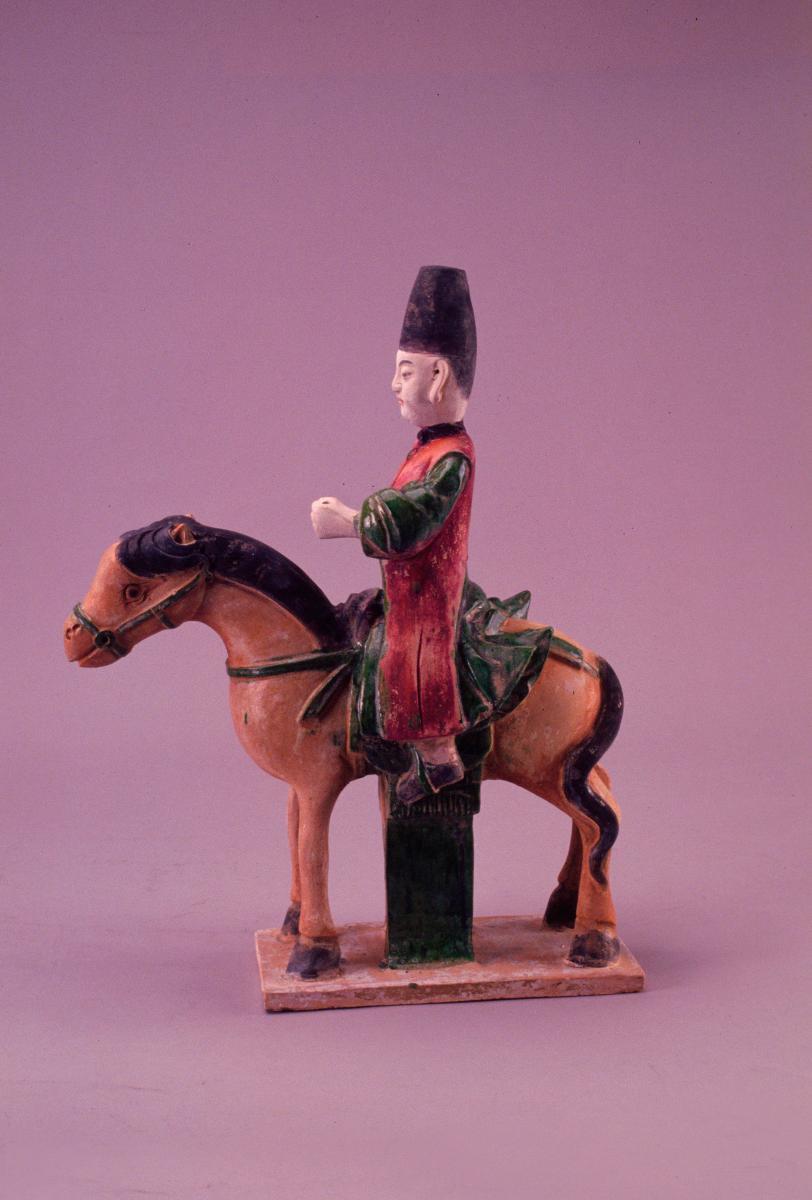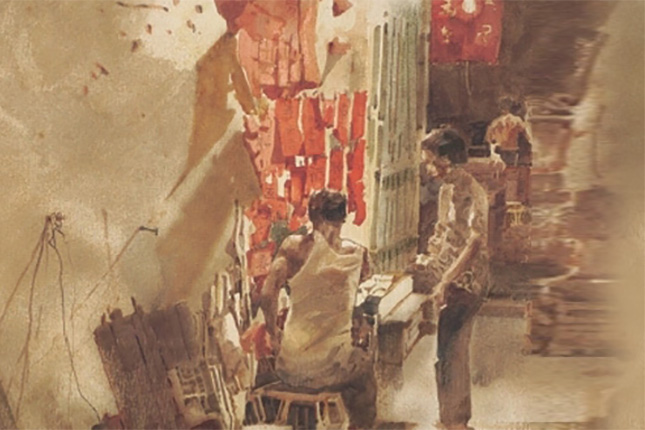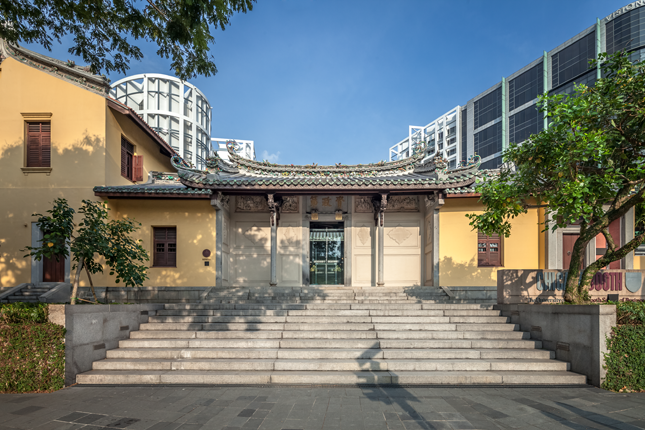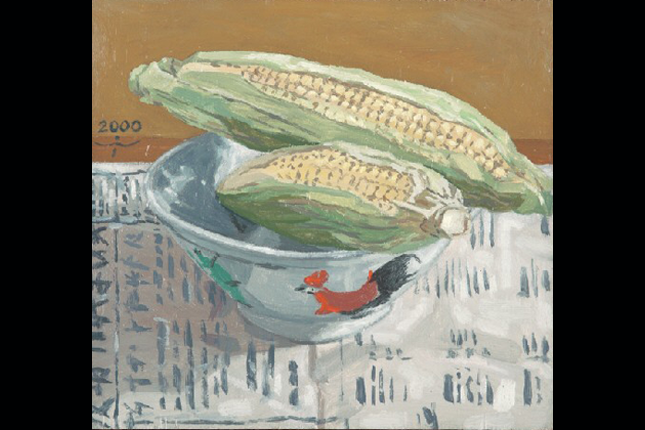This lead-glazed or 'sancai' (‘three colour’) rider on horse with pigment-painted saddle would have been part of a group of pottery tomb figures. Dark leaf-green glaze covers the rider's robe. His hands appear to hold the rein, now missing. The practice of using lead-glazed burial wares had already started during the Han dynasty (206 BCE-220 CE). This glaze technology further developed during the Tang dynasty (618-906) into ‘sancai’ (‘three-colour’) glaze. It included colours such as cream, amber, brown and blue. This tradition of decoration continued into the Ming period. The importance of horses to the Chinese ruling class can be seen in the large numbers of pottery sculptures that have been found in Chinese tombs. Apart from military uses, the horse also played a central role in the long-distance trade over the Silk Road. The custom of making ‘mingqi’ or burial wares was an ancient practice. It was believed that these wares were necessary for the deceased in the next world. Elaborate groups of burial wares were also a display of wealth and social status.




